Partner Yoga Poses For A Heartfelt Valentine’s Day
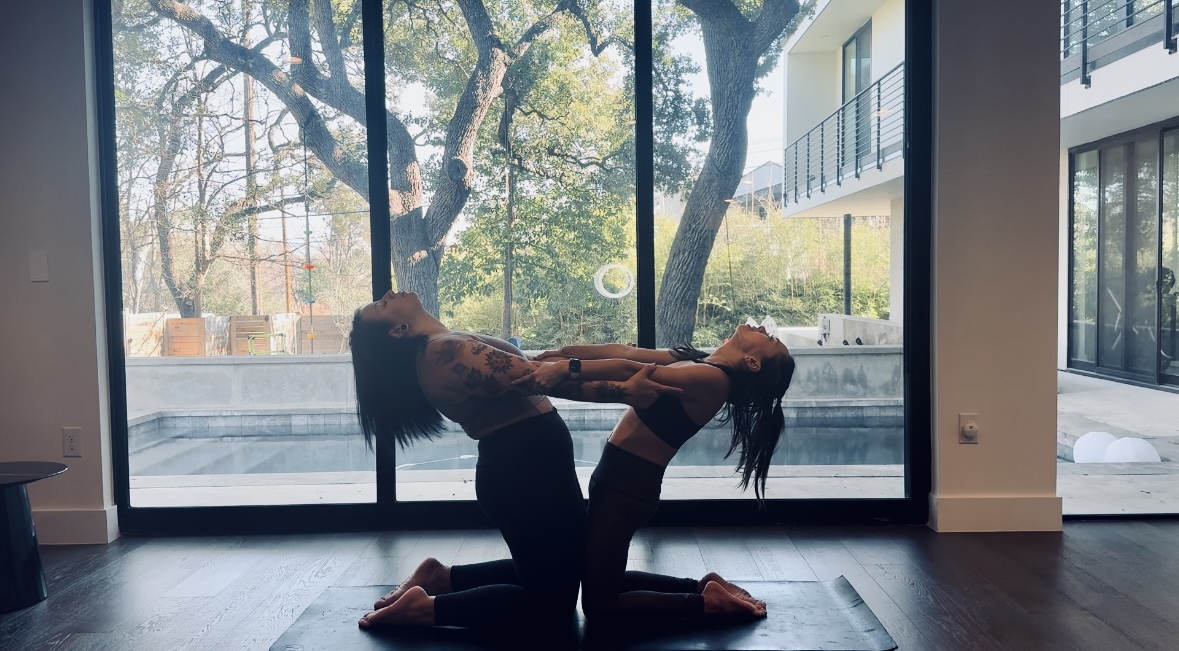
As Valentine’s Day approaches, a lot of couples are looking for meaningful ways to celebrate connection. This year, consider stepping into the yoga mat together and exploring the enchanting world of partner yoga poses.
Beyond flowers and chocolates, partner yoga poses can provide a unique opportunity to deepen your bond, cultivate trust and share moments of joy. These series of moves are especially effective if your partner’s love language is touch or quality time.
Today I’m guiding you through a series of partner yoga poses that are focused on the heart chakra. This chakra is all about love, kindness and compassion for yourself and others. In addition, these poses will help you in strengthening the chest, shoulders, arms and back. I hope this will help you enhance your physical and emotional connection this Valentine’s Day.
I wanna express my sincere gratitude to my friend Lauren Vivens for helping me model these poses for you.
1. Breath of Unity: Partner Breathing. Begin your partner yoga journey with a simple yet powerful pose – partner breathing. Sit facing each other, cross legged. Close your eyes and synchronize your breath. As you inhale, feel the energy exchange between you and your partner. Exhale, letting go of any tensions.
This is where you establish a foundation of shared breath, fostering a sense of unity and connection.
2. Warm Up. Begin by warming up your bodies individually with some gentle stretches particularly focusing on the shoulders, chest and back as these areas will be engaged in the pose. I suggest warming up with a tabletop pose to cat-cow and thread the needle.
3. Cobra with One Partner Standing. The partner who will be lying down (Partner A) should start by lying face down on the mat, placing their arms on each side, palms face up. Partner A’s feet should be hip-width apart, and their forehead should be resting on the mat. Partner A communicates with Partner B, who will be standing, to establish a comfortable distance and alignment. Partner B stands facing Partner A’s head, with their feet about hip-width apart for stability. Partner A lifts their arms up towards the ceiling and partner B reaches down, extending their arms to hold partner A’s wrist. Once both partners feel secure with the grip, partner A starts to engage their core muscle to support their lower back and pelvis. Partner B engages their leg muscle for support and stability. Partner B slowly starts to lean back, using their core strength and maintaining a firm grip on Partner A’s wrist. Partner A simultaneously begins to lift their chest and head off the mat. Once in this pose, hold the position for several breaths. Encouraging each other to breathe deeply, feeling the stretch across the front of the bodies. To release from the pose, communicate with your partner. Partner A can lower their torso down slowly and Partner B can stand. Repeat the same pose but with the partners taking each other’s roles.
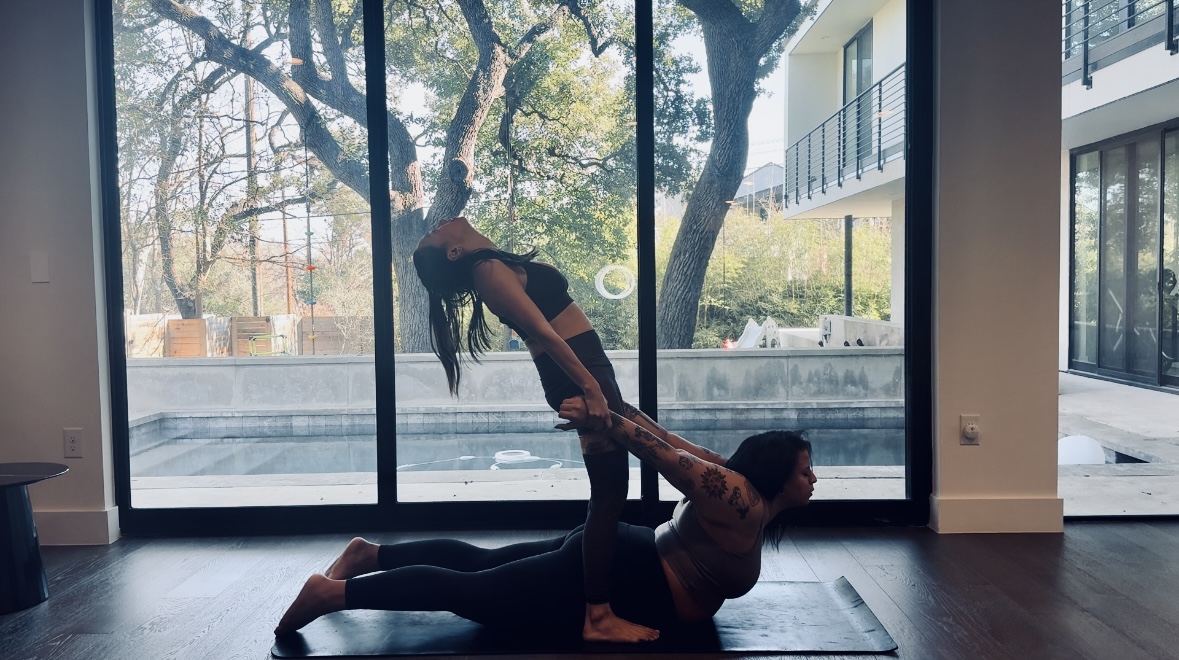
4. Camel Pose with Interlocked Arms. Begin by kneeling on the mat with your knees facing your partner. Ensure that there is enough space between you for comfortable reach. Both partners should align their hips over their knees and shoulders over hips. Reach your arms towards your partner and each of you will attempt to walk your hands to your partner’s upper arm holding onto each other for balance. Simultaneously start to lean backwards, coordinating your movement with your partner. Keep the interlocked arms strong and supportive. As you both lean back, arch your spines gently, attempting to touch your shoulder blades to open up your chest. Once in this pose, hold the position for several breaths. Encouraging each other to breathe deeply, feeling the stretch across your front of the bodies. To release from the pose, communicate with your partner and come back up slowly.

5. Back Bird (Challenge / Peak Pose). This is a captivating pose usually done in acroyoga that involves one partner acting as the base and the other partner as the flyer. Learn more about my acro yoga experience.
Begin by choosing roles. Decide who will be the base (the partner on the bottom) and who will be the flyer (the partner who will be lifted). The base lies down on their back on the mat with their knees bent and feet flat on the ground. They should keep their arms alongside their body with their palms facing up. The flyer stands in front of the base’s feet, a few feet away. Clear communication is essential in this pose. Both partners should discuss their comfort levels, any concerns, and establish signals for communication during the pose. The flyer begins by reaching their hands behind them, the base then moves their feet towards the flyer’s buttocks. The flyer starts to step back and at the same time reaches their hands toward the base’s feet to place it on the area between their buttocks and lower back. Where to place the base’s feet depends on the size difference of the partners but usually you want the base heel right on the flyers gluteus maximus muscle.
How to begin flight. The flyer starts by putting their hands on the base ankle with their thumbs out. The flyer then starts bending backwards keeping their elbow in a 90 degree position. The base bends their knees until they can reach the flyers elbow. With coordinated effort, the base slowly extends their leg upwards, lifting the flyer off the ground. The flyer keeps their core engaged but lets their feet and legs hang. Once airborne the base adjusts their alignment. Ideally the pelvis is aligned with the knees and ankles. The base’s feet are flexed. The base also moves their hand to the flyers shoulder. Once the base is comfortable, the flyer can adjust their own body to find balance.
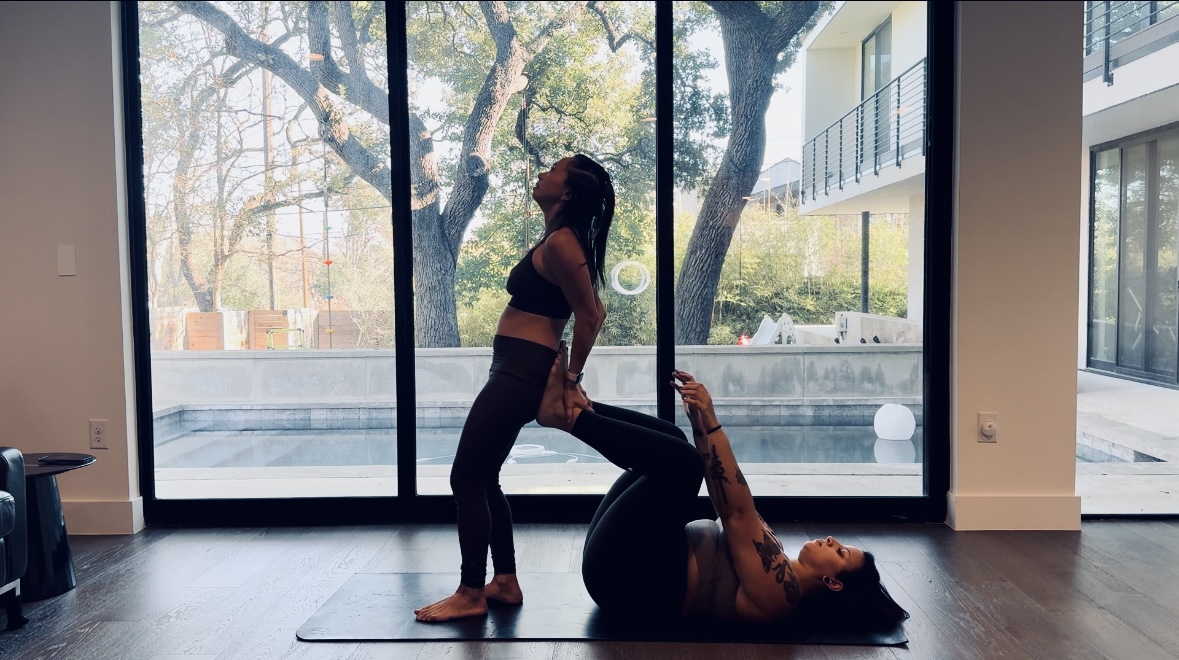
Optional variations. The flyer can bend their knees like in camel pose and try to reach for their ankles. Once that feels stable, the flyer can lift one leg up.
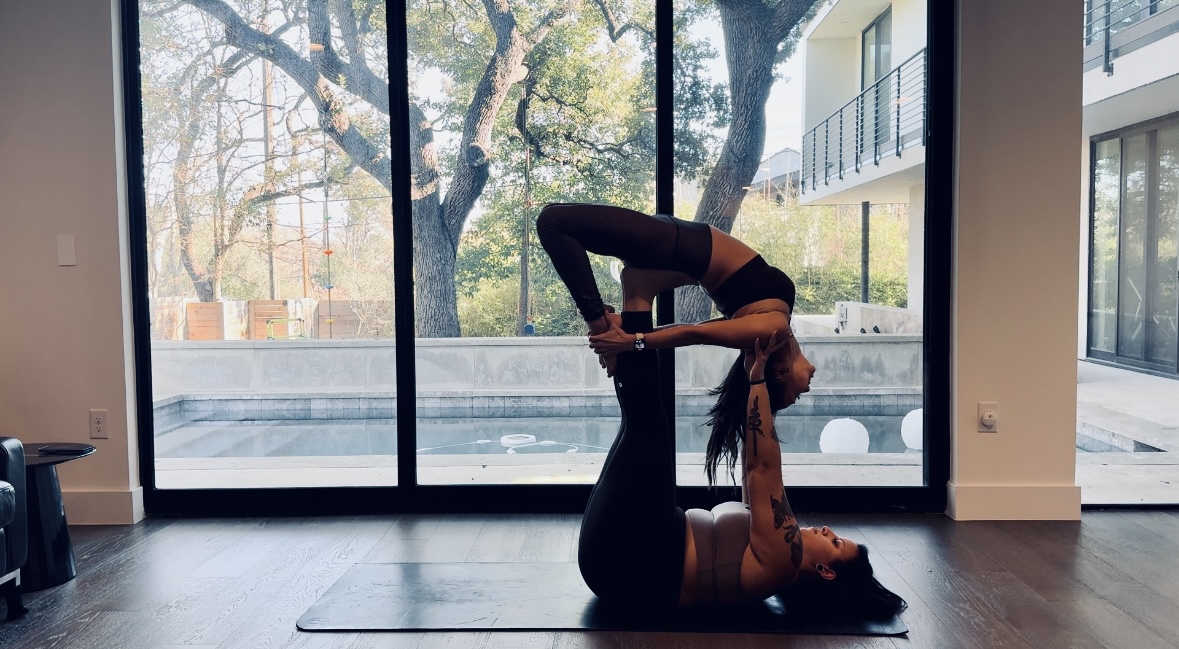
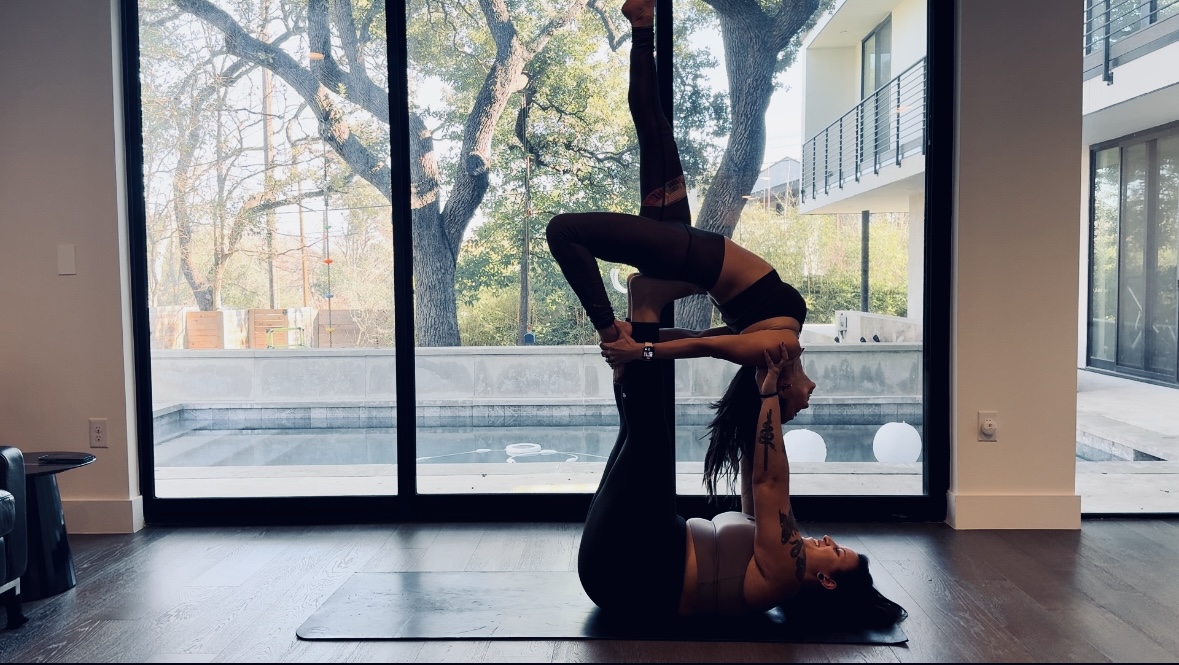
Enjoy the sensation of flying in back bird pose! Hold the pose for as long as comfortable focusing on breath and connection.
To exit the pose, the base slowly bends their knees and returns the flyer to a standing position. The flyer gently lowers their legs back to the ground. Repeat the same pose but with the partners taking each other’s roles.
This Valentine’s Day, embrace the extraordinary through partner yoga. These poses are not just about physical closeness; they are a celebration of unity, trust and shared moments of mindfulness. Whether you’re a seasoned yogi or beginner, these partner yoga poses offer a delightful way to connect, strengthen and cherish your time together.
Check out my instagram @Charlene.dipaola where I’ll be sharing a video series of these poses for you to follow along.
May your February be filled with joy, laughter and the harmonious flow of shared breath on the yoga mat and off.
About Charlene
Charlene Dipaola is a yoga teacher, martial artist and dancer. She is proud to be an Austin resident with her husband and 2 young kids. Her passion is using movement to help women have power, control and confidence over their own lives. She is the founder of Hip Shake Fitness, a virtual community focused on empowering women through dancing and movement. They have over 300k followers on youtube.
She teaches locally at Core Power Yoga, Monarch and Capoeira Austin. Checkout her weekly class schedule HERE. You can also follow her on instagram @charlene.dipaola .






